Gentle Reader,
There comes a time when surgery for arthritis makes sense. I have reached that time. I began blogging at www.NoWheelchair.wordpress.com in 2004, to share strategies a person with arthritis could use to avoid taking medication or having surgery. My posts have been about my own journey to manage increasingly severe osteoarthritis and spinal stenosis, and more recently a condition known as listhesis, or the collapsing of vertebra to the left and to the right. As my Feldenkrais practitioner keeps telling me, “You’ve got a complicated spine.”
It has been an interesting process to dedicate this year to a protocol of my own making. I have gone to a physical medicine specialist, Dr. Ren, at the Polyclinic who suggested physical therapy for eight sessions. The PT exercises did nothing to alleviate the weakness in my legs, nor the pain, lovely as it was to show up to the attention of admiring young men twice a week.
I decided to take Dr. Ren’s offer of an injection of steroids in L5 and L4 and I had a good four pain free weeks. With less pain, I was able to pay attention to my gait and realized I was so unstable on my right side that my right hip was swinging out with every step. I decided to go back to Becci Parsons, my Feldenkrais practitioner for help getting symmetrical again. Walking everywhere with hiking sticks helps with symmetry. My strong upper body lifts my weaker legs up and the hiking sticks keep me parallel. They are less for balance than for lifting weight off the collapsed vertebra.
Nerve pain came back after a short time. Dr. Ren thought I might be a good candidate for surgery. Becci has had two operations for very similar conditions so I went to her neurosurgeon, Dr.Peter Nora. Dr. Nora has twenty years of back surgery under his belt. When I met him, I looked at his hands which are small and delicate. A good sign. He put me through the diagnostic paces where you resist pressing your knees together and then apart; your feet in and then out; your knee lifting against pressure; all of which I passed with flying colors. It seemed obvious this 79 year old woman showed no sign of weakness. He tried one last diagnostic tool: I stood against the wall pressing my heals, my back and my head against it. The test: stand for ten minutes in that position. I lasted 5 seconds before my legs gave way.
I so appreciated Dr. Nora’s willingness to listen to my experience. When I stand around for a while, the right leg loses feeling and will not support my weight. Think about when standing around is what we do as humans: hanging out in the kitchen with family while we cook; looking at a painting in the museum; holding a drink at a cocktail party or reception; singing in the choir at church; waiting in line at Starbucks, at the airport, at the bank. All of these scenarios result in weakness and the sensation of getting ready to fall over. Dr. Nora heard me and kept trying moves so he could reproduce my experience in a controlled clinical setting. Thank goodness. I once had an orthopedist kick me out of his office after I told him I walked to Broadway and Madison from the 3rd Ave bus stop, a distance of about a mile, most of it up a steep hill. I was using my sticks so I could do it.
Dr. Nora explained the surgery by showing me the MRI of my spine from the bottom to the top as if you were looking up a tube in which the spinal cord runs. Between L3, L4 and L5, the poor spinal cord disappeared completely. He will carve off the bonein those areas to stop the pinching of the nerves. It could be a big change for the better. Since I have been avoiding surgery for so many years, there is no guarantee all the nerves will come back, but the pain should reduce considerably.
You would think I would get in for surgery for arthritis as quickly as possible. But my calendar is full this summer with harvesting the raspberries (bending, lifting and twisting), camping with family, traveling to Hawaii with a granddaughter and several graduations. The first stretch of time when I could commit to no bending, no twisting and no lifting for a month begins August 16th. So that is when the surgery is scheduled.
In the mean time, Dr. Ren’s Assistant, Diana Ferdana, who calls me pharmaceutically naive, meaning I have little experience with drugs, prescribed Gabapentin. This drug prevents seizures and also blocks nerve pain. Side effects bother me as I am a little loopy, a little sleepy, but the benefit of the smallest possible dose is considerable. I still take Shaklee’s Pain Relief Complex to keep other arthritis under control, like my thumbs and fingers and shoulder. She also gave me an industrial sized back brace which I wear when picking raspberries, doing laundry, emptying the dishwasher, sweeping the floor. You get the idea, bending, lifting and twisting.
I still go to the Xgym every week. My trainer has talked to Becci and together they have a workout plan that stabilizes my core while building upper body strength. These exercises don’t ask much from my weak legs other than stability although I am doing controlled lunges with hiking sticks. Staying fit is important when heading for major surgery. The guys at Xgym will help me get back on my feet when the surgery is over.
I am still walking most days although forty minutes to an hour is as long as I can go without sitting down to give my back relief. So no hiking with my group. This is the hardest loss for me as I have been in the wilderness nearly every week since 2004, summer and winter. Happily there are plenty of parks nearby with old growth forest and trails, but there is nothing like deep wilderness. I miss it and my hiking buddies.
I share all this personal experience with the hope that you or someone you know will take heart in their own struggle with arthritis. Don’t give up and sit down. We have to keep moving to avoid further damage and disability. At this point for me, I can do damage by over-doing so I have to learn to listen to the signals that say, enough. Most days at least a mile of walking works. I begin each day with tiny Feldenkrais movements to activate the core, the psoas and the multifidae that go up and down my spine to stabilize it. Just half an hour of that careful “exploration”, as Becci calls it, makes the difference for movement all day.
So, Be well, Do well and Keep Moving.
Feel free to share this. And don’t forget to like me on Face book.
Comments and questions are encouraged.
Betsy
206 933 1889


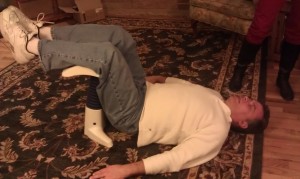


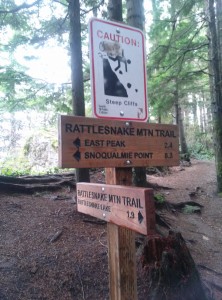

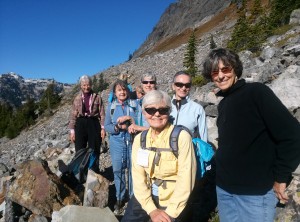

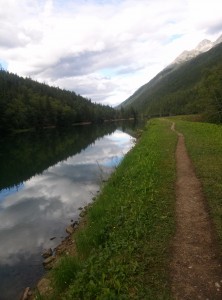
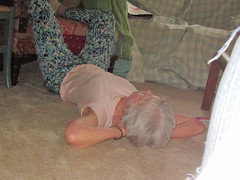 but get too busy at the desk to do them when you get back home. Then suddenly the pain shows up. I do know what to do:
but get too busy at the desk to do them when you get back home. Then suddenly the pain shows up. I do know what to do: Madame Tussaud’s wax museum is a history/pop culture lesson. For her, American giants from George Washington and Lincoln to the Obama’s came alive. For me, she introduced me to the TV stars, singers and comedians who perform today (and I never watch).
Madame Tussaud’s wax museum is a history/pop culture lesson. For her, American giants from George Washington and Lincoln to the Obama’s came alive. For me, she introduced me to the TV stars, singers and comedians who perform today (and I never watch).

 weather was wonderful for strolling. Probably the most exciting thing Ellie did was make a Muppet at FAO Schwartz.
weather was wonderful for strolling. Probably the most exciting thing Ellie did was make a Muppet at FAO Schwartz.
 depicted in Judy Chicago’s famous Dinner Party. On our last day there we went out to Saint John the Devine. Blue-gowned graduates of Columbia Teachers’ College were just leaving the Cathedral and their ceremony. Proud parents and grand parents took pictures as we sat on the steps. Later when I asked Ellie if she would ever come back to New York, she said maybe she’d go there to college.
depicted in Judy Chicago’s famous Dinner Party. On our last day there we went out to Saint John the Devine. Blue-gowned graduates of Columbia Teachers’ College were just leaving the Cathedral and their ceremony. Proud parents and grand parents took pictures as we sat on the steps. Later when I asked Ellie if she would ever come back to New York, she said maybe she’d go there to college. Cartilage is 65 to 80 percent water, so staying hydrated is important for the health and lubrication of your joints. Maintaining proper hydration is even more important for individuals who suffer from gout. Water helps flush uric acid out of the body, and studies suggest staying hydrated may help prevent flare-ups. It isn’t necessary to count the number of glasses of water you drink in a day — the latest research suggests that if you take time to drink a glass whenever you feel thirsty, you’ll probably do fine. You are already drinking enough water, which is important for managing your arthritis. To spice things up, you might want to try flavoring your water with fresh fruit slices or drinking unsweetened green tea or herbal tea — there are so many delicious and fun varieties. And be sure to avoid sugary drinks like soda, sweetened water, fruit drinks, sweet tea, and froufrou coffee concoctions.
Cartilage is 65 to 80 percent water, so staying hydrated is important for the health and lubrication of your joints. Maintaining proper hydration is even more important for individuals who suffer from gout. Water helps flush uric acid out of the body, and studies suggest staying hydrated may help prevent flare-ups. It isn’t necessary to count the number of glasses of water you drink in a day — the latest research suggests that if you take time to drink a glass whenever you feel thirsty, you’ll probably do fine. You are already drinking enough water, which is important for managing your arthritis. To spice things up, you might want to try flavoring your water with fresh fruit slices or drinking unsweetened green tea or herbal tea — there are so many delicious and fun varieties. And be sure to avoid sugary drinks like soda, sweetened water, fruit drinks, sweet tea, and froufrou coffee concoctions. I know you don’t smoke, but I just wanted to share with you a few good reasons to stay smoke-free: Smoking delivers toxins throughout the body, causing inflammation and increasing the risk of arthritis. In one study, smokers were more than twice as likely to develop rheumatoid arthritis than people who didn’t smoke. In addition, researchers from a multicenter study reported in 2005 that smokers had a greater risk of osteoarthritis of the knee, possibly because smoking interferes with the body’s ability to repair its own cartilage. The bottom line is that staying smoke-free is a wise choice!
I know you don’t smoke, but I just wanted to share with you a few good reasons to stay smoke-free: Smoking delivers toxins throughout the body, causing inflammation and increasing the risk of arthritis. In one study, smokers were more than twice as likely to develop rheumatoid arthritis than people who didn’t smoke. In addition, researchers from a multicenter study reported in 2005 that smokers had a greater risk of osteoarthritis of the knee, possibly because smoking interferes with the body’s ability to repair its own cartilage. The bottom line is that staying smoke-free is a wise choice! you’re already there! Being overweight can put added physical stress on your joints, which can aggravate arthritis (particularly osteoarthritis) and increase your levels of pain. An unhealthy weight can also promote inflammation, which as I’ve mentioned is the root of arthritis. Another reason to keep eating right and exercising!
you’re already there! Being overweight can put added physical stress on your joints, which can aggravate arthritis (particularly osteoarthritis) and increase your levels of pain. An unhealthy weight can also promote inflammation, which as I’ve mentioned is the root of arthritis. Another reason to keep eating right and exercising! arthritis. It can help you lose or maintain weight, which reduces the overall stress impact on joints. Strong muscles can absorb shock from daily movements, keep joints stable, and protect against additional joint injury. Stretching and yoga can improve flexibility and range of motion and reduce joint stiffness. Swimming and water aerobics allow free movement without added stress on the joints. Walking is another manageable, low-impact form of aerobic exercise appropriate for most individuals with arthritis. All good reasons to maintain your active lifestyle!
arthritis. It can help you lose or maintain weight, which reduces the overall stress impact on joints. Strong muscles can absorb shock from daily movements, keep joints stable, and protect against additional joint injury. Stretching and yoga can improve flexibility and range of motion and reduce joint stiffness. Swimming and water aerobics allow free movement without added stress on the joints. Walking is another manageable, low-impact form of aerobic exercise appropriate for most individuals with arthritis. All good reasons to maintain your active lifestyle!